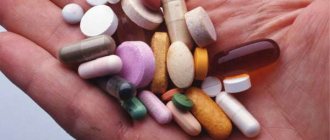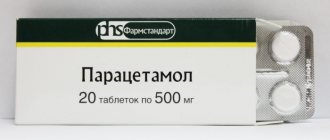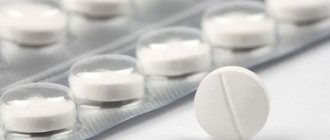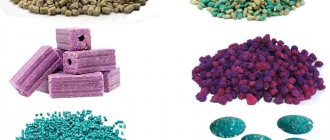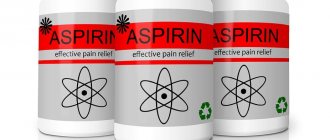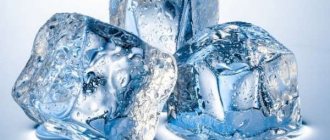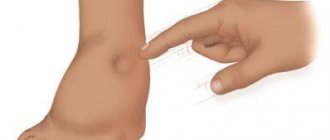Human life and health depend on water. They survive for a month without food, and four days from loss of fluid. It participates in all biochemical processes of body cells. Aging progresses from dehydration. A person drinks because of a dry throat and a feeling of thirst. These symptoms indicate an imbalance in water balance. The disease occurs from the loss of 5% of fluid from the cells, from 10% there is a violation of cerebral circulation. The lethal dose of water loss for the body is considered to be one fifth of the total fluid.
Daily requirement for the body
A topic regularly arises among those who want to lose weight about the effect of water on a person’s health, beauty and slimness. There is also the opposite opinion that excess fluid causes swelling and additional stress on the heart and kidneys. A natural question arises about the daily norm for a person and how to calculate individual needs. The amount of fluid in the body is 70% of the total weight.
According to scientists, you should drink 8 glasses of clean water every day. In the new version, you can replenish the balance with any drinks and food. The opinions of doctors and nutritionists do not coincide on this issue. Doctors advise that the main volume of liquid should be consumed before lunch, and before bedtime the amount should be reduced to 100 grams. This will prevent swelling.
You need to drink before meals. The restriction to quench thirst is removed during the period of intense training.
Four reasons to drink water
Water reduces the desire to eat. The signs of hunger and thirst are the same. They try to satisfy the feeling of appetite. In fact, the body needs fluid instead of food to restore balance. Replacing water with food causes excess weight gain. If you drink the norm, the feeling of hunger will appear when the body needs it, and extra pounds will not be deposited on the hips. So, four reasons to drink:
- suppresses appetite, which promotes weight loss;
- enhances brain activity;
- participates in the production of enzymes necessary for the breakdown of fats;
- gives strength and energy.
Read also Botulism in pickles: signs and prevention
Brain cells contain 80% water. Dehydration can be fatal, so a person mistakes the impulse of thirst for a feeling of hunger. They calm him down with a snack; the bulk of the energy from food is deposited at the waist in extra pounds. After a certain time, the dehydrated brain again signals for help. The person again snacks instead of quenching his thirst. Then excess weight appears, and the productivity of brain activity decreases.
Pancreatic lipase is involved in the breakdown of lipids. She breaks fats like a chisel, like a wall brick by brick. Lipids are converted into energy for physical and mental activity. From a lack of water, the enzyme goes into a passive form, and fat is deposited on the waist and weakens the condition of the body.
If the plant is not moistened, the leaves dry out and it dies. The same thing happens with human cells. When the water balance is disturbed, the body begins to use fluid from the cells to ensure vital functions.
Signals from the body about the onset of dehydration
A person feels tired due to daily fluid loss. The body signals a problem in the following way:
- A dry throat means a lack of water, but a person prefers a carbonated sweet drink or coffee, which increases dehydration.
- The skin requires constant hydration. Dryness is considered an early symptom of water imbalance. To prevent it from peeling and cracking, you need to drink the normal amount of fluid per day for a person.
- Feeling constantly thirsty is a clear sign of dehydration. An example is dryness during a hangover. Alcohol dehydrates the body by 10% and one glass the next morning is not enough.
- The deficiency causes redness and dryness in the eyes, and a feeling of discomfort occurs in those who wear contact lenses.
- Muscles contain 70% water; due to a serious lack of fluid, they contract. To increase muscle mass, you need to drink water before, during and after training.
Read also The benefits and harms of flaxseed oil for the body
Nine ways to die from one drink
According to the World Health Organization, 92% of the world's population drinks alcohol. Our figure is even higher. Russia, unfortunately, remains the absolute world leader in the number of “drinkers” per capita, ahead of countries such as France, Portugal, Italy, Germany and Hungary. But people not only drink, but also take medications, some of which cannot be combined with alcoholic beverages.
Generally speaking, alcohol can interfere with the action of almost any drug. This happens because ethyl alcohol and medications are destroyed in the liver by the same enzymes, unwittingly “interfering” with each other. But still, for most drugs, alcohol is not a serious obstacle to their breakdown in the body. However, there are drugs for which combination with alcohol is strictly contraindicated. A classic example is the antibacterial drug metronidazole
. When consumed with alcoholic beverages, a person’s face turns red, nausea and general malaise appear.
And there are quite a lot of such examples of incompatibility. In some cases, the effect of alcohol is distorted, in others, the effect of drugs is enhanced or weakened, and in others, a person’s reactions change. Not many people probably know that even such a seemingly harmless drug as analgin
slows down the breakdown of alcohol in the body and, therefore, enhances its effect.
Doctors have long noticed that those patients who systematically take analgin, indomethacin, ibuprofen
and allow themselves decent doses of alcohol have heart rhythm disturbances, lethargy, and tinnitus.
And paracetamol
, together with alcohol, generally becomes a real poison for the liver and even in small doses can cause jaundice.
Specially created drugs for the treatment of alcoholism - disulfiram -
and
cyanamide
. By the way, the unusual properties of cyanamide were first discovered at a nitrogen fertilizer plant where this compound was synthesized and used. The administration noticed that the workers did not take a drop of alcohol into their mouths. And the doctor who observed them noticed that those who tried to drink experienced a sharp rush of blood to the face, profuse sweating, rapid heartbeat, shortness of breath and nausea. If the dose of alcohol was slightly increased, pain in the heart and a feeling of approaching death arose. With such symptoms you will no longer want to drink.
Headache, redness of the skin, nausea and dizziness often occur when drinking alcohol with antibiotics
, primarily with
doxycycline, rifampicin, chloramphenicol
. At the same time, the antibacterial effect of such drugs can either weaken or strengthen.
Unusual interaction of alcohol with the heart drug clonidine
.
The person falls into a deep sleep and subsequently does not remember anything that happened to him. That’s why clonidine is sometimes used “for other purposes”, adding to the glass of the person they want to rob. By the way, other drugs used to treat hypertension behave in a similar way along with alcohol - adelfan, dopegit, apressin
.
But if you drink regular nitroglycerin
, severe vasodilation will occur, which can lead to acute heart failure. A person in this condition needs emergency medical care, otherwise death cannot be ruled out.
caffeine on tipsy people
. It is common knowledge that coffee is served to invigorate or revive a very tipsy person. At first, this is exactly what happens, but after a while the intoxication returns, moreover, stronger than before the coffee was drunk.
The combination of alcohol, sleeping pills and tranquilizers is very dangerous. Despite the body’s easy tolerance to sleeping pills, “with the help” of alcohol the patient, unknowingly, can approach their lethal dose. nitrazepam is especially dangerous in this regard.
and the tranquilizer
diazepam
.
Combining alcohol with antidepressants
. Moreover, the danger remains for two weeks after discontinuation of these drugs. Even a small amount of beer or wine can cause increased blood pressure and hypertensive crisis.
Alcohol enhances the depressive effect on the central nervous system of the antihistamines diphenhydramine
and
suprastina
. It is known that when taking antihistamines it is better not to drive; it is doubly dangerous to do this if you took the same suprastin the day before and drank 100 grams of vodka.
naphthyzin , a remedy for the common cold, becomes harmful to the heart.
and
galazolin
.
Alcohol can speed up the absorption of drugs from the stomach and intestines, creating higher concentrations of the drug in the body than would normally be the case. And this leads to an overdose with all the ensuing consequences. For example, such cases are known. A man drank 100 g of vodka after taking a headache pill; Soon his temperature jumped to 39, and blisters appeared on his skin. In another case, a healthy man washed down his multivitamins with vodka. Bleeding inflammation of the skin and kidneys developed. In the third case, the patient drank vodka after taking a sulfa drug, which led to jaundice.
Particularly dangerous combinations:
alcohol + aspirin
=
stomach ulcer
alcohol +
caffeine, ephedrine, theophedrine, coldrex, coldact
=
hypertensive crisis
alcohol +
diuretics, antihypertensive drugs
=
sharp decrease in blood pressure
alcohol +
paracetamol
=
liver damage
alcohol +
insulin
=
sharp drop in blood sugar, coma
alcohol +
antipsychotics, painkillers, anti-inflammatory drugs
=
intoxication
alcohol +
sleeping pills, tranquilizers
=
intoxication, cerebral coma
alcohol +
antibiotics, sulfonamides
=
drug intolerance, lack of therapeutic effect
alcohol +
nitroglycerin
=
increased pain and allergies
What are the dangers of drinking too much?
Excess fluid can lead to water intoxication. A person is concerned about dehydration, but the danger is hyponatremia. A lack of sodium ions in the blood leads to cells filling with excess fluid, which is considered a lethal dose of water per day. Intoxication can cause a heart attack and death from water.
The person gets carried away and drinks fluids above the norm. An overdose causes organs to increase in volume. Brain tissue is in danger of dying; it can grow by only 10% without reversible conditions.
If swelling or pale skin appears on the lips from three liters of liquid, it is necessary to determine what the individual consumption rate is.
In old age, the amount of fluid in the body is lost and leads to aging. The water norm established for humans can reduce the early withering of body cells. You should know how much fluid you need to stay hydrated to stay healthy.
The role of food in dehydration
While drinking pure water is the primary way to consume fluids, other fluids such as herbal teas, fruit juices, and broths also help keep the body hydrated.
Water is also found in many foods, the consumption of which replenishes the body with fluid. Examples include vegetables, fruits, berries and herbs.
However, not all foods will help hydrate your body. Very dry, salty foods, such as breaded foods, salty chips, or other dry packaged snacks, can make dehydration worse.
Drinks containing alcohol or caffeine can dehydrate the body more quickly by causing excessive urination.
Lethal dose of salt in grams
Excess sodium chloride is just as dangerous as its deficiency. The lethal dose of salt for a person is 250 grams, that is, a quarter of a pack. The exact amount is 3 grams per kilogram of human weight. To calculate, you need to multiply your weight by three.
If you manage to consume so much salt, you will have to die long and painfully. Ultimately the experiment will be fatal. I would like to believe that there are no volunteers willing to check the validity of medical information.
In spoons
On entertainment sites and public pages on the Internet, myths about deadly products float. Sodium chloride also has a place in the list of poisons. Some users post provocative stories, while other young people type into Google the question whether you can die from salt. Yes, you can die. It all depends on the quantity.
The lethal dose of table salt (250 grams) is 8 heaped tablespoons and 2 full teaspoons.
We proceed from the calculation: 1 tablespoon contains 30 grams of salt (“heaped”) and 20 grams at the level of the edges. Another question is how to eat such an amount of salt to die? It is not possible to eat it dry with cutlery. If dissolved in water, then it is impossible to wash down food with a salty solution.
Risks of dehydration
Symptoms of dehydration can appear quickly. If the body begins to lose water, it can send signals to the brain to cause a reaction that the person will notice.
Most people are familiar with minor symptoms of dehydration, such as severe dry mouth or feeling very thirsty.
A review published in the scientific journal Nutrients notes that thirst is the first sign that a person does not have enough water in the body ().
For most people, drinking fluids when they are thirsty gives them more than enough water to function properly.
Hearing these signals and drinking water and other liquids on time is extremely important. As noted in the BMC Public Health study, water makes up 60% of a person's body weight, and losing just 3% of that weight through water loss can lead to dehydration ().
If a person ignores these signs or is unable to get water, their body begins to react accordingly. The brain sends signals to the body to conserve water and urinate less. It will also slow down your kidneys.
Dehydration can cause other noticeable changes in the body, such as:
- slowness or lack of energy
- headache
- dizziness and confusion
- heat stroke and heat cramps
- stiffness in joints that can stick together over time and not work properly
- elevated or otherwise unregulated body temperature
- cerebral edema
- sudden changes in blood pressure
- seizures
The person may also go into shock and become unresponsive.
Drinking water regularly helps keep cells healthy, but when a person's body loses water quickly, the body's cells begin to shrink as the water leaves them.
First aid
In case of acute intoxication, it is necessary to call an emergency team. Before the doctor arrives, it is necessary to alleviate the victim’s condition:
- Give 4 glasses of water to drink and induce vomiting by pressing on the back third of the tongue. Do gastric lavage several times.
- Drink a glass of milk or 2 tablespoons of vegetable oil. Fats delay the absorption of table salt.
- Give rice boiled in water, which absorbs the salt.
Until paramedics arrive, you need to give the patient water. The liquid dilutes the salt concentration.
Drug intoxication
You can get poisoned and die from medications, no one really argues with that. It is important to understand exactly how this happens and what to pay attention to so that fatal poisoning does not occur when using a regular home first aid kit or products prescribed by a doctor.
Overdose
Any medicine turns into poison if taken in large doses. For example, prescription drugs based on codeine (Codterpin, Cofex, Codeterp) are able to block the cough center and alleviate the patient’s condition with a debilitating dry cough. If the dosage of the medicine is exceeded, the process of blocking the cough reflex can turn into complete respiratory depression and dangerous suffocation.
Another example of poisoning is an overdose of antihypertensive drugs (Captopress, Berlipril). The result of taking the wrong doses will be a strong decrease in blood pressure, which will cause the person to lose consciousness and may even die.
Incompatibility of drugs
Incompatibility can be pharmacological or pharmaceutical . In the first case, when two drugs are taken simultaneously, effects that are incompatible with each other occur. In the second case, the danger lies in the reaction of the active ingredients of two different drugs. For example, when mixing two incompatible solutions in one syringe, you can get not two desired actions, but a completely different, third chemical compound.
An example of incompatibility would be the joint use of the following medications:
- popular home acetylsalicylic acid and calcium chloride,
- aminoglycosides and cephalosporin antibiotics,
- folic acid with steroid contraceptives,
- sleeping pills and alcohol.
The danger lies in the loss of the effect of one of the drugs or, on the contrary, its significant enhancement, even death.
Careful study of the instructions or strict adherence to the treatment regimen prescribed by the doctor will help prevent serious consequences of inappropriate use of medications.
Potentially dangerous drugs that are in every person's home medicine cabinet can be considered non-steroidal anti-inflammatory drugs (Aspirin, Diclofenac), antihypertensive and hypnotic drugs, antitussives and antihistamines. Salicylates and Ibuprofen in significant overdose lead to serious gastric ulcers and increase the risk of bleeding. Antihistamines of the first generations, as well as sleeping pills, have a depressant effect on the central nervous system.
Household chemicals threaten lives
Household chemicals can also cause fatal poisoning. Accidents due to negligence are more likely to occur with young children . Improper storage of household chemicals, as well as bright pictures and beautiful packaging attract children's attention to such products and increase the likelihood of testing the product for taste. If a child has eaten, for example, washing powder, a serious burn to the mucous membrane of the esophagus and stomach is possible. Symptoms of intoxication include vomiting, dizziness, and severe abdominal pain.
Frequent use of cleaning products, especially those with harsh chemical ingredients and odors, can cause a gradual accumulation of toxins in the body. This also includes cosmetics, for example, the constant use of hairspray or hair dyes by hairdressers.
How to stop a hiccup attack?
- Breathe into the bag. Position it so that your chin is inside and hold it tightly with your hands. Breathe calmly through your mouth for 30-60 seconds (or 10 breaths), then rest a little in normal breathing.
- Eat a teaspoon of sugar.
- Hold your breath.
- Drink a glass of cold water.
- Stay warm.
- Pull your tongue.
- Lift the uvula with a spoon. It dangles between the tonsils above the root of the tongue.
- Try to purposefully groan or burp.
- Pull your knees to your chest and stay in this position.
- Click on the eyeballs.
- Eat a slice of lemon.
- Relax and try to breathe slowly, controlling your inhalations and exhalations.
Valsalva maneuver
For hiccups, the Valsalva maneuver can help: pinch your nose and mouth, close your vocal cords and exhale forcefully.
By the way, this procedure helps not only with hiccups, but also on an airplane during climb. It is often performed by divers.
But be careful: the Valsalva maneuver should not be performed during a cold, as the infection can enter the middle ear cavity and cause inflammation.
The procedure is also dangerous for hypertensive patients, as it increases blood pressure.
How long can you live without food?
If you are deprived of food, you may still survive long enough to find a way to feed yourself. It may take several months before your body is unable to deal with the fat accumulation on its own. There were strikes where people went on hunger strikes and most managed to live up to 70 days without food. Most of them died before the end of the strike.
Anyway, this is a general number and usually the period varies greatly from one person to another. There are several factors that determine how long a particular person can survive without food, such as weight, genetic predisposition, etc. Another very important factor that increases your chances of surviving longer than average without food is hydration. The better hydrated you are, the longer you can survive without food or food.
A very popular example of this is Gandhi, who (while on hunger strike for his country's independence) lived for 21 days simply by drinking enough water. Water is known to detoxify the body and remove plaque from the liver and arteries.
During fasting, the body must support itself only in terms of the nutrient reserves it has. For example, in order for the body to successfully detoxify the liver, it needs sufficient amounts of certain nutrients. Using them, the liver can break down toxins and neutralize them. They pass through the body without damaging it.
If you starve to death over several days and weeks and do not drink enough water, not only will these toxins break down much more, but the liver will not be able to eliminate them without the presence of enough water. body Water promotes metabolism and eliminates toxins. People who go on strict diets and longer periods of fasting are known to develop irreversible diseases due to the liver's inability to process toxins. If the body is generally healthy and has enough nutrients, it can handle the detoxification process well.
This is the reason why dehydration can shorten a person's survival during a famine. The first stages of fasting begin in the metabolic state of the body. The body begins to use its own fat reserves, which are burned for energy, so that the body has enough energy to find food (in evolutionary terms).
After a few days (2-3 days), another process will begin: this is the ketone stage. This means that the body will begin to burn fat reserves in the liver. If there is fat in other organs, the body will also use them. These liver fatty acids are called ketones.
The next stage may be actual damage to the body. If a person is still hungry and all fat reserves are completely depleted, the body will turn on itself. The body will literally begin to feed itself, using the tissues of the intestinal walls, muscles and other organs.
The longer this process is prolonged without breaking the fast, the less chance there is of repairing these damages. They can be permanent if the person dies from starvation for more than 3-4 weeks. Some of the most dangerous damage can occur in the muscles of the heart. As the body begins to break down the heart muscle, it becomes weaker and will not be able to pump enough blood to other organs. As a result, it can simply be closed and death will occur.
This process will last on average about 1 month, but as you can see, it depends on the body. For example, if a person has more fat reserves, he can live more than 1 month. A person with very low fat reserves cannot survive even a month. Moreover, body strength and immune system are also indicative factors for increasing survival rate. Additionally, if the muscles are in good shape and the person is strong, they also have a better chance of surviving more than 1-1.5 months.
How much should you drink per day
The daily amount of fluid for a healthy person should be calculated individually. To say that everyone needs to drink 2 liters every day is not entirely correct.
The volume of water required for a person can be easily calculated independently. To do this, you need to multiply 30 ml by weight in kilograms . So, if you weigh 60 kg, 1800 ml will be enough for you, and if you weigh 100 kg, you will need to drink 3 liters per day. This volume of liquid should not be drunk at once, but distributed evenly throughout the day.
Dietitians recommend that everyone start their day with a glass of regular table water; it helps clear the stomach of mucus that has accumulated in it overnight and starts all the processes of digestion and metabolism in the body.
Attention should also be paid to the quality of the water consumed. Thus, an unrefined liquid rich in nitrates and chlorine is dangerous and harmful. It is best to use purified table water for daily use , purchased in stores or from special suppliers.
At the same time, the “mineral water” beloved by many is not suitable for constant use. Due to its special electrolyte composition, it is considered medicinal water and is taken according to the regimen prescribed by the doctor. For example, Borjomi is mineral water with an alkaline composition. This “mineral water” helps with poisoning, intoxication, hyperacid gastritis, and diabetes.
Summarize
- Hydration is essential for human life. Although some people can survive for several weeks without food, they can only survive a few days without water. Drinking water and foods that contain a lot of water can help prevent dehydration.
- Without water, dehydration can quickly affect the body. Depending on the environment and level of physical activity, a person may notice changes in their body in just a few hours. If a person has diarrhea or vomiting, their body may lose water faster.
- In general, a person who drinks when they are thirsty is not at risk of dehydration.
Tags: Water
- Related Posts
- 8 Foods Containing Large Amounts of Copper
- What time of day is best to eat carbohydrates?
- Can food act as medicine? Everything you need to know
« Previous entry
Food poisoning and death
Is it possible to die from food poisoning? Food can actually be deadly. There are two main points to consider here:
- About etching by the spoiled product itself or mold . A typical example is damage by mold, which actively develops in a humid environment. Some types of mold are deadly and cause serious damage to the respiratory and nervous systems. This also includes food intoxication after consuming toxic substances contained inside the product. For example, bitter cherry kernels are rich in hydrocyanic acid, and mushrooms are dangerous to eat due to the high concentration of toxins in poisonous species.
- Poisoning by an infectious agent that contaminates food . In this case, the problem most often concerns store-bought food products or those that have been kept in improper conditions. An example is spoiled canned food, where, if stored improperly, the deadly pathogen botulism freely multiplies. Another example of poisoning would be meat or eggs contaminated with salmonella, a bacterium that causes serious intestinal toxicity. In this case, death occurs from intoxication, as well as severe dehydration. You need to be as careful and attentive as possible with the following food products: meat, semi-finished products, fish from reservoirs of questionable quality, poorly washed or thermally untreated products. Shigella, staphylococcus, listeria, and E. coli are also dangerous pathogens.
How does the hiccup mechanism work?
Our chest and abdomen are separated by the diaphragm muscle.
In order for us to inhale, the diaphragm contracts and lowers, giving more space for the lungs to take in air. To exhale, the diaphragm relaxes and rises, “pressing” the lungs and pushing out carbon dioxide.
This is similar to drawing up liquid with a syringe - we pull back the plunger to draw up the medicine and press down on it to inject the drug.
If everything goes well, we breathe in and out safely—about 23,000 times a day.
But sometimes a spasm occurs in the diaphragm, and it contracts unscheduled.
We suddenly inhale, the airways, along with the vocal apparatus, collapse in surprise, and the characteristic “Hick!” is produced.
This is how hiccups arise.
